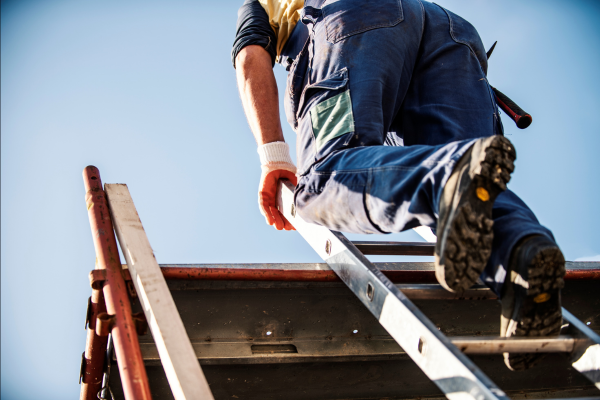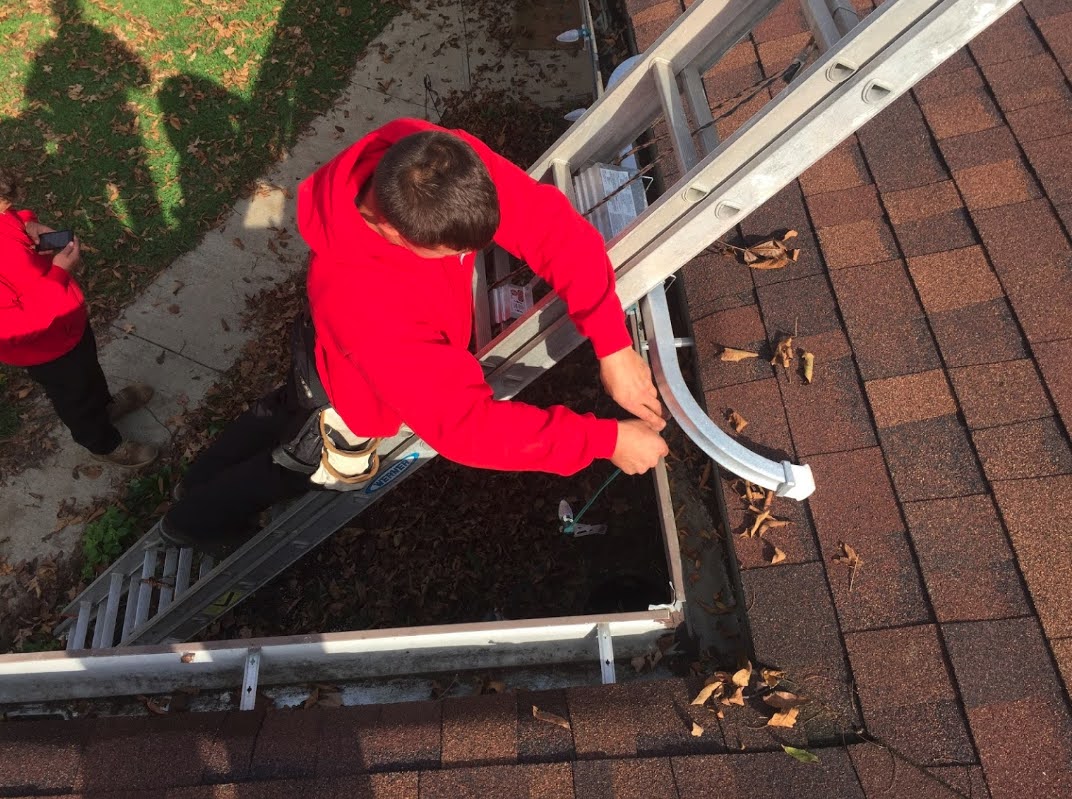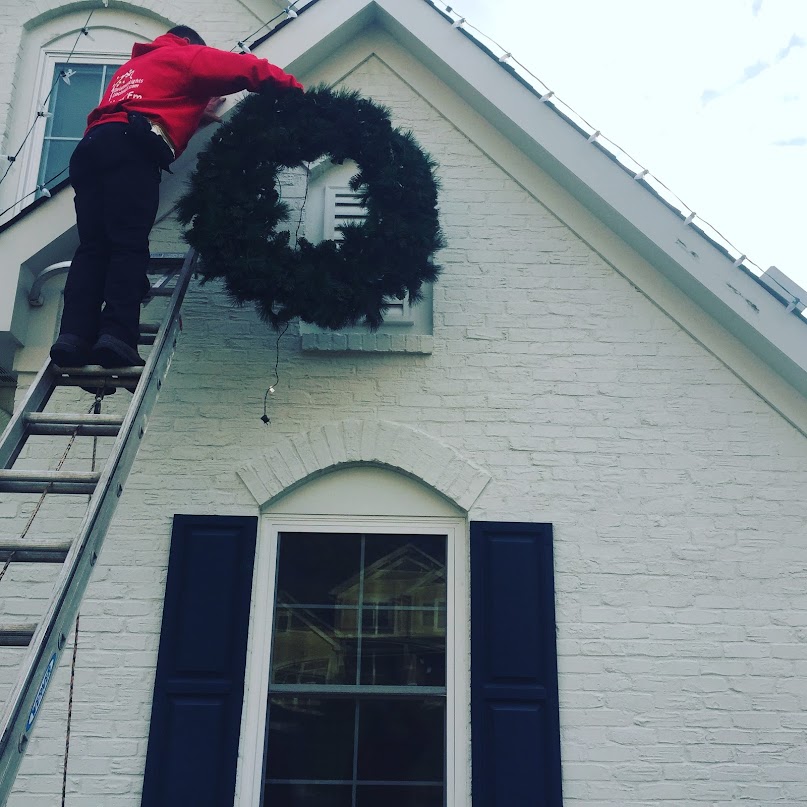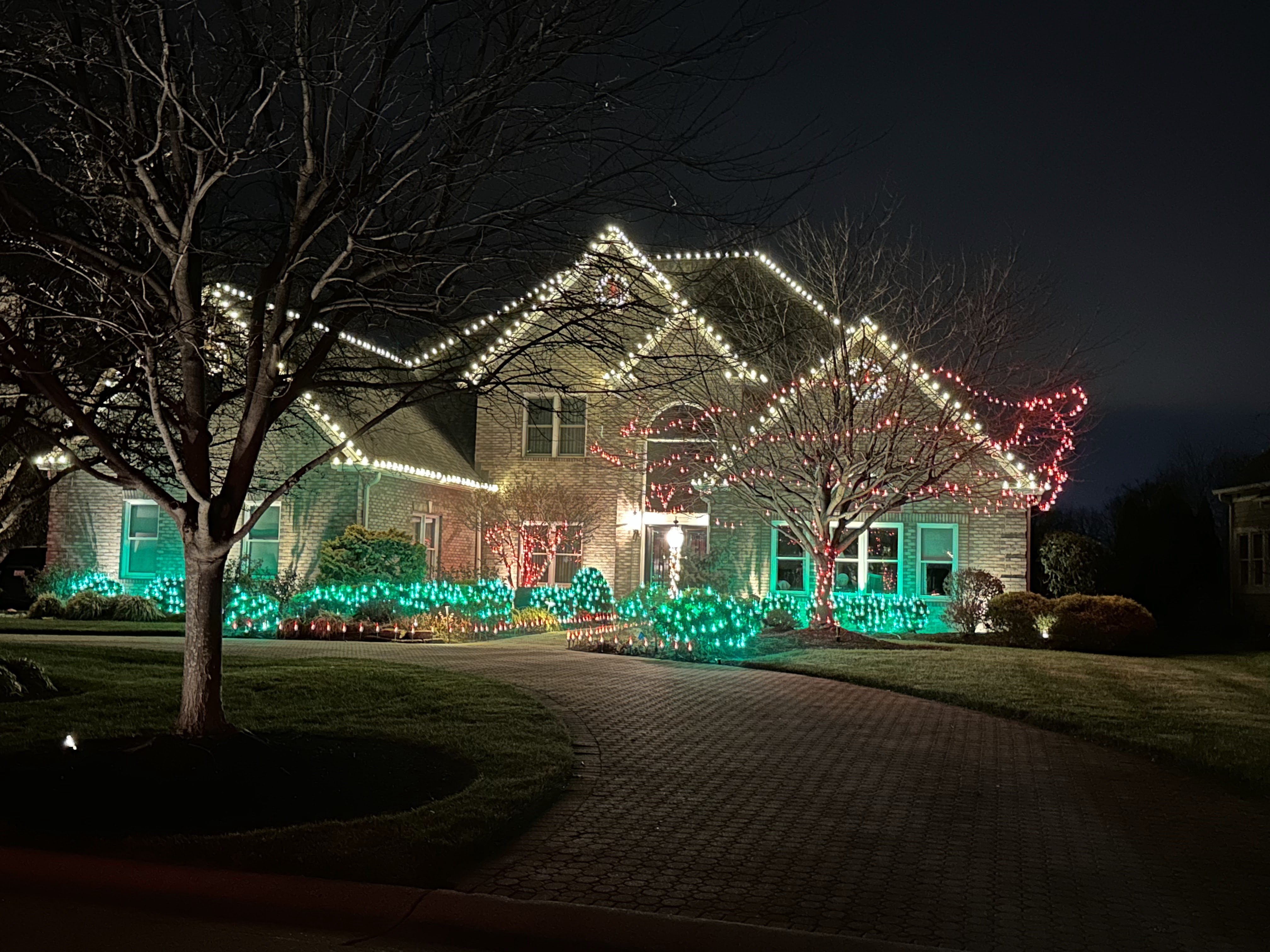Master Marketing Bundle for Christmas Light Installers
🎄 Supercharge Your Business with Our All-in-One Solution! 🎄
Maximize your marketing impact and save money with our comprehensive package designed specifically for Christmas light installation businesses.
Bundle Includes:
5️⃣ Google Review Tap Cards
1️⃣5️⃣0️⃣ Custom Christmas Light Referral Cards
FREE Shipping on all orders in the US (Additional shipping charges for international orders)
Key Features:
🔍 Boost Visibility: Stand out online and in your neighborhood. Be the first choice when people search for Christmas light installers.
🤝 Foster Trust: Turn new clients into repeat customers with real testimonials.
📈 Expand Your Reach: Grow your business through referrals. Let satisfied customers bring you new jobs by spreading the word.
⏱️ Reclaim Your Time: Focus on hanging lights while we gather reviews and referrals.
🎩 Elevate Your Image: Look as professional as your work. Impress clients with quality marketing.

Why Choose the Master Bundle?
💰Save Over $75: Compared to buying items separately
🚀Complete Marketing Toolkit: Cover all bases with review
generation and referral promotion
🎯Targeted Approach: Tools designed specifically for Christmas light installers
⏱️Time-Saving: Streamline your marketing efforts with ready-to-use materials
📈Accelerated Growth: Combine the power of reviews and referrals to expand your business
Each bundle comes with:
5 Google Review Tap Cards

🎁Google Review Tap Cards
Boost your online reputation effortlessly
NFC technology for instant review access
Compatible with all smartphones
Complete set up included
150 Christmas Lights Referral Cards

🎁 Custom Referral Cards
Turn happy customers into your best marketers
Eye-catching, double-sided design
Built-in referral program promotion
QR code for easy reviews
Don't let another holiday season pass you by.
Invest in your growth today with our Master Marketing Bundle!
🎄 Get Your Master Bundle Now!
Discover Expert Tips on Our Blog

Mastering Ladder Safety: A Professional's Guide to Christmas Light Installations
As a professional Christmas light installer, your job involves creating stunning displays that bring joy and holiday cheer to your clients. However, the success of your installations relies not only on your creativity and technical skills but also on your commitment to safety, particularly when it comes to ladder use. Ladder-related accidents are all too common in the industry, often resulting in serious injuries, costly downtime, and even legal issues. By prioritizing ladder safety and adopting best practices, you can protect yourself, your team, and your business while delivering exceptional results for your clients.
Ladder Selection and Inspection
The foundation of ladder safety lies in choosing the right ladder for the job. As a professional, you'll encounter various installation scenarios that require different ladder types, such as step ladders, extension ladders, and articulating ladders. Assess the specific requirements of each project, considering factors such as the height of the installation, the type of surface you'll be working on, and the amount of space available. Always opt for a ladder that exceeds the minimum height needed, providing a comfortable working range without overreaching.
In addition to height, pay close attention to the ladder's weight capacity. Every ladder has a maximum weight rating that includes both the user's weight and the weight of any tools or materials they may be carrying. Overloading a ladder can lead to structural failure and serious accidents. As a professional, invest in heavy-duty ladders that can accommodate your needs and provide a stable working platform.
Before each use, conduct a thorough inspection of your ladder. Check for any signs of damage, such as bent or dented rails, cracked or worn steps, and missing or loose components. Pay special attention to the ladder's feet, ensuring they are intact and provide adequate traction. If you discover any issues, tag the ladder as unsafe and remove it from service until it can be repaired or replaced. Maintain a log of your ladder inspections to demonstrate your commitment to safety and compliance with industry standards.

Site Preparation and Ladder Placement
Once you've selected the appropriate ladder, the next step is to prepare the installation site and position the ladder safely. Begin by assessing the area for potential hazards, such as uneven ground, obstacles, or overhead power lines. If necessary, clear the area to create a stable, level surface for your ladder. Always maintain a safe distance from electrical hazards, following OSHA guidelines and local regulations.
When placing your ladder, follow the four-to-one rule: for every four feet of ladder height, position the base one foot away from the wall or structure. This ensures a stable angle that minimizes the risk of the ladder tipping or slipping. If possible, secure the top of the ladder to the structure using ladder stabilizers or tie-offs for added stability. In cases where the ladder cannot be secured, have a spotter hold the base to prevent shifting or sliding.
Advanced Climbing Techniques for Professionals
As a professional, you'll face challenging installation scenarios that require advanced climbing techniques. Always maintain three points of contact with the ladder, keeping your body centered between the rails. Avoid overreaching or leaning to one side, as this can cause the ladder to tip. If you need to reach a distant spot, climb down and reposition the ladder closer to your work area.
When navigating around obstacles or working at difficult angles, use climbing aids such as ladder jacks, standoffs, or stabilizers to maintain stability and minimize ladder movement. These devices allow you to work more efficiently while reducing the risk of falls or injuries.

Professional-Grade Safety Gear and Equipment
Investing in high-quality safety gear is essential for any professional Christmas light installer. Start with a pair of sturdy, non-slip work boots that provide good traction and support on the ladder rungs. Choose weather-appropriate clothing that allows for ease of movement and visibility, avoiding loose or baggy items that could snag on the ladder or decorations.
To keep your hands free while climbing, use a tool belt or lanyard to secure your tools and materials. For heavier items or larger installations, consider using a hoist system to lift supplies to your working height. When working on steep roofs or elevated structures, implement fall protection systems, such as harnesses and anchors, to prevent serious injuries in case of a slip or fall.
Having a trained spotter or assistant on the ground is crucial for any professional installation. They can help stabilize the ladder, pass tools and materials, and quickly respond in case of an emergency. Ensure that all team members are trained in ladder safety best practices and communication protocols to maintain a safe and efficient work environment.

Ladder Maintenance, Repair, and Storage Protocols
Regular maintenance is key to keeping your ladders in top condition and extending their lifespan. Establish a maintenance schedule that includes routine inspections, cleaning, and repairs. After each use, clean your ladders to remove dirt, debris, and moisture that can lead to corrosion or deterioration. Pay attention to the ladder's moving parts, such as hinges and locks, lubricating them as needed to ensure smooth operation.
If you identify any issues during your inspections, address them promptly. Minor problems, such as loose bolts or worn safety labels, can often be fixed on-site. More serious damage, such as bent rails or cracked fiberglass, may require professional repairs or replacement. Keep accurate records of all maintenance and repairs performed on your ladders to demonstrate your due diligence and commitment to safety.
Proper storage is equally important to maintain the integrity of your ladders. Store them in a cool, dry place, away from direct sunlight and extreme temperatures. Avoid storing ladders in areas with high humidity or chemical exposure, as this can lead to corrosion or weakening of the materials. Use ladder racks or wall-mounted brackets to keep your ladders organized and easily accessible, while preventing damage from improper storage.

Emergency Response and Incident Reporting
Despite your best efforts to prioritize safety, accidents can still happen. As a professional, it's essential to have a comprehensive emergency response plan in place. Train all team members on emergency procedures, including how to contact emergency services, perform basic first aid, and safely evacuate an injured person from a ladder or elevated work area. Regularly review and practice your emergency response plan to ensure that everyone knows their roles and responsibilities.
In the event of a ladder-related incident, document the details thoroughly and report it to the appropriate parties, such as your insurance provider and any relevant regulatory agencies. Conduct a thorough investigation to identify the root cause of the accident and implement corrective actions to prevent future occurrences. Use these incidents as opportunities to review and update your safety protocols, incorporating any new industry best practices or equipment advancements.
Ladder safety is a critical component of any successful Christmas light installation business. By prioritizing safety and adopting best practices, you demonstrate your professionalism, protect your team, and ensure the long-term success of your company. Invest in ongoing training and education for yourself and your employees, staying up-to-date with the latest safety techniques and equipment.
Lead by example on every installation, demonstrating a strong commitment to safety and setting the standard for your team. By fostering a culture of safety, you not only reduce the risk of accidents and injuries but also improve the quality and efficiency of your work. Your clients will appreciate your professionalism and attention to detail, leading to increased referrals and a stellar reputation in the industry.
Remember, the most stunning Christmas light displays are those that are installed safely and responsibly. By mastering ladder safety and making it a top priority, you'll be well on your way to building a thriving, successful business that brings joy and holiday magic to your community for years to come.

1. Q: What factors should I consider when choosing a ladder for a Christmas light installation?
A: When selecting a ladder, consider the height of the installation, the type of surface you'll be working on, and the amount of space available. Always choose a ladder that exceeds the minimum height needed and has a weight capacity that accommodates both your weight and the weight of your tools and materials.
2. Q: How often should I inspect my ladders?
A: Conduct a thorough inspection of your ladders before each use, checking for damage, wear, and missing or loose components. Maintain a log of your ladder inspections to demonstrate your commitment to safety and compliance with industry standards.
3. Q: What is the four-to-one rule for ladder placement?
A: The four-to-one rule states that for every four feet of ladder height, position the base one foot away from the wall or structure. This ensures a stable angle that minimizes the risk of the ladder tipping or slipping.
4. Q: How can I maintain stability when working on a ladder in challenging situations?
A: Use climbing aids such as ladder jacks, standoffs, or stabilizers to maintain stability and minimize ladder movement when navigating around obstacles or working at difficult angles. Always maintain three points of contact with the ladder and avoid overreaching or leaning to one side.
5. Q: What safety gear should I invest in as a professional Christmas light installer?
A: Invest in high-quality, non-slip work boots, weather-appropriate clothing, tool belts or lanyards for securing tools and materials, and fall protection systems such as harnesses and anchors for elevated installations. Always prioritize safety gear that meets industry standards and regulations.

6. Q: Why is it important to have a spotter or assistant during installations?
A: Having a trained spotter or assistant on the ground is crucial for stabilizing the ladder, passing tools and materials, and quickly responding in case of an emergency. They play a vital role in maintaining a safe and efficient work environment.
7. Q: How should I store my ladders to ensure their longevity and safety?
A: Store your ladders in a cool, dry place, away from direct sunlight and extreme temperatures. Use ladder racks or wall-mounted brackets to keep them organized and easily accessible while preventing damage from improper storage.
8. Q: What should I do if I identify damage or wear on my ladders during an inspection?
A: If you identify minor issues like loose bolts or worn safety labels, address them promptly on-site. For more serious damage, such as bent rails or cracked fiberglass, remove the ladder from service and seek professional repairs or replacement.
9. Q: What should be included in an emergency response plan for ladder-related incidents?
A: An emergency response plan should include procedures for contacting emergency services, performing basic first aid, and safely evacuating an injured person from a ladder or elevated work area. Regularly review and practice your emergency response plan with all team members.
10. Q: How can I foster a culture of safety within my Christmas light installation business?
A: Lead by example on every installation, demonstrating a strong commitment to safety and setting the standard for your team. Invest in ongoing training and education, stay up-to-date with industry best practices, and prioritize safety in all aspects of your business operations.



Copyright ©2024 All Right Reserved website designed by christmaslights.io
Terms of Service / Privacy Policy
Have questions or need assistance?
Contact us at (855)619-LITE


